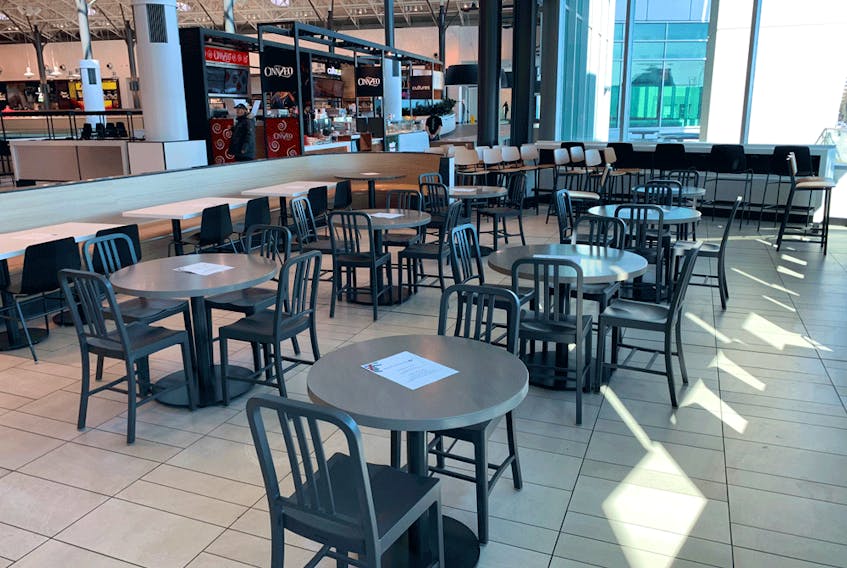There was a very odd feel to Statistics Canada’s snapshot of December’s labour markets, published Friday. The headline numbers were good, but there was weakness everywhere else.
For instance, the jobless rate for the capital region tumbled to 6.7 per cent from 7.1 per cent in November, giving Ottawa-Gatineau the best record among the country’s six biggest cities. Only Vancouver, with a December jobless rate of 7.4 per cent came close, while Toronto, Calgary and Edmonton were all in double-digits. (Based on a 3-month moving average, seasonally adjusted).
Yet the capital region has also recorded the weakest recovery in jobs since the depths of the pandemic last spring. Employment in December approached 730,00 — a gain of nearly 34,000 from the June nadir. That represents a recovery of 42 per cent of the jobs lost during the early stages of the pandemic.
Most of the other big cities have staged significantly bigger recoveries, especially Calgary, which in December employed 3 per cent more people than it did in February. Montreal had clawed back 90 per cent of its lost jobs while Toronto and Vancouver had recouped more than 75 per cent of their employment losses.
The reason the capital region continues to report the lowest jobless rate has everything to do with where we started. In February, the month before governments ordered the initial economic lockdowns in response to COVID-19, Ottawa-Gatineau’s jobless rate was just 4.3 per cent, significantly lower than all other large cities but Vancouver, where the jobless rate was 4.4 per cent.
To understand what happened next, consider how the cities’ workforces shifted in response to the pandemic (which requires using seasonally unadjusted data, albeit it smoothed out using three-month moving averages).
Related
From February to the spring nadir, Ottawa-Gatineau saw its employment shrink nearly 10 per cent — the smallest drop among the big six cities despite our more favourable starting position. Toronto, Edmonton and Vancouver each suffered net losses in excess of 13 per cent. For this, much thanks goes to the capital region’s extremely lopsided economy, in which one in four workers are employed by the federal government. No other city comes close to this dependence.
During the early months of the pandemic, governments shed about 8,000 jobs in the capital region and have since rehired 5,000 — relatively small numbers measured against December’s total of 182,000 employees in public administration. It explains, in part, why the capital region has seen relatively slow job growth since the spring.
However, there are also a couple of worrisome trends in traditionally strong industry sectors. Professional services, for instance, a category that includes lawyers, architects, scientists and project managers who often sell specialized services to the government.
This sector, which accounts for nearly 10 per cent of the region’s total workforce, suffered a net decline of 5,700 jobs between February and June, and has failed to recoup a single job since. This is in sharp contrast with all other large cities, which have seen a significant rise in their professional services workforces since spring. Not only that, the increases have more than made up for the earlier losses everywhere but Calgary.
One possible explanation for the relative weakness in the capital region: many federal departments have put a lot of projects on hold, notably ones that don’t have anything to do with fighting the pandemic.
Another sector contributing to the region’s lethargic recovery in jobs is high-tech — something of a surprise given the strong revenue performance of Ottawa’s top firms. StatsCan estimates the region saw the number of core high-tech job surge to 48,300 in May from 42,800 in February. This, while much of the rest of the economy was shrinking. Ottawa firms such as Nokia, Ericsson and Ciena specialize in building communications networks considered essential in the era of Netflix and Zoom calls, while Shopify sells technology and services for running e-commerce websites.
Even so, tech employment since the spring has slid back to an estimated 40,400 in December — below the sector’s employment level in February. This means Ottawa-Gatineau is the only large metro area to have suffered a net decline in high-tech employment during the 10 months of the pandemic. Ironically, Shopify — which is headquartered here — may be a contributor. It employs an estimated 7,000 plus worldwide, a significant chunk who are customer service representatives operating out of their homes. Shopify has been doing most of its hiring outside the Ottawa area, especially in Toronto and Vancouver.
Toronto has seen its high-tech workforce swell to 269,000 in December — up 27,00 from February — while Vancouver now hosts 91,200 tech workers, up from 76,000 in February. These numbers reflect the development of a wider community of tech startups and multinational branch operations.
One of the capital region’s hardest-hit sectors continues to be accommodation & food services, which in December employed little more than 31,000 people compared to 45,500 pre-pandemic. The net decline might have been even bigger but for a surprising resilience among restaurant owners. While many eateries disappeared last year, newcomers have taken on some of the old locations. In Little Italy for instance, Del Piacere took on the lease at 416 Preston Street abandoned by Stoneface Dolly’s, which closed in October. And Festival of India now offers takeout at 422 Preston, the former site of Allegro Ristorante, which closed last October after three decades in the business.
Amid the sector’s decline, these are welcome signs of optimism.
Copyright Postmedia Network Inc., 2021









